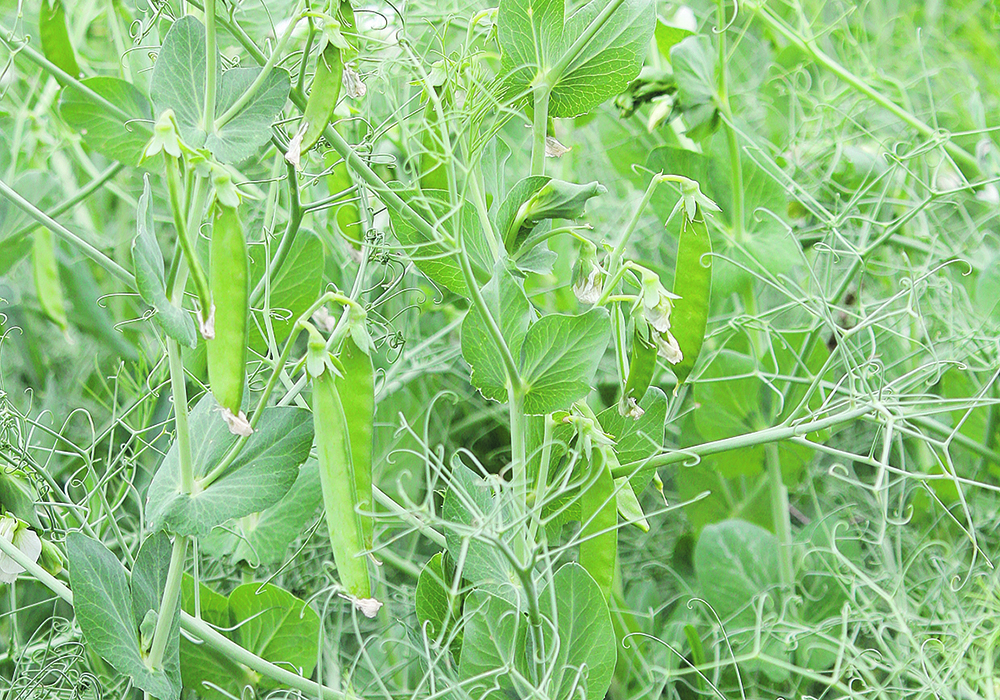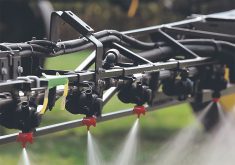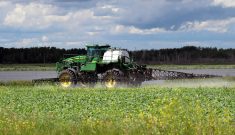Improved moisture this year means growers may need to dust off practices and products they haven’t used in a while
Recent rain has increased the need for pulse producers to get re-accustomed to disease management practices used in a season with adequate or high moisture that may have been set aside in recent dry years.
“Moisture continues to be top of mind as a concern, but these spring rains definitely have been helping,” said Lori Yarnell, technical marketing specialist for fungicides with BASF in Calgary.
“But will the rains continue to be to the level that will allow great crops this year? We haven’t seen that in a few years. If the moisture does continue, will we have to have concerns about disease?”
Read Also

Short rapeseed crop may put China in a bind
Industry thinks China’s rapeseed crop is way smaller than the official government estimate. The country’s canola imports will also be down, so there will be a lot of unmet demand.
Many growers haven’t been using fungicides to the same level they normally would have before the last few years of dryness and drought, she said. The recent moisture might be a wake-up call.
“(They’ve been) applying less, maybe one pass instead of two — maybe no passes. So will disease come back, and will I need that fungicide application?”
Another worry among pulse growers is fungicide insensitivity. Producers may see the effects of resistance and will need to use tools and strategies in a timely manner, said Yarnell.
“We haven’t had the moisture levels to see fungicide failures at this point. Disease levels have been low since we’ve been talking about Group 11 resistance with anthracnose, at least.
“Whether that will be a challenge that growers are going to have to manage to a greater extent this year is a hot topic.”
There are few hard-and-fast rules pertaining to fungicide applications. Yarnell said it all comes down to local moisture levels because most diseases on the Prairies thrive under high moisture. In some regions, one fungicide pass may suffice. Farmers experiencing prolonged moisture may need two.
However, the only way to tell for sure is by scouting, said Yarnell — not just drive-by-the-field-and-take-a-quick-look scouting, but get-your-hands-dirty scouting.
“If you’re just driving by the field in your truck, you’re likely not going to be seeing that disease very early,” said Yarnell.
“Go to the low spots in the field, look at the base of the plants and start to see if you can see diseases coming in.”
It’s also key to scout early, especially if conditions are moist and temperatures are moderate. In these cases, it will be important to put fungicide down before early flowering, she said.
“By the time you’re seeing disease you will have already had significant yield damage, so it’s important to be early and preventative with our scouting.”
Dennis Lange, pulse and soybean specialist with Manitoba Agriculture, emphasized pre-season scouting for weeds in all pulses.
“Make sure that you use a pre-emergent herbicide with some residual control just to give you that extra control,” he said.
“In Manitoba, in some areas you’re dealing with waterhemp and some areas you’re dealing with kochia and you want to make sure you control those weeds early.
“With peas it’s especially important because peas are not super-competitive when the plants are small, so using a pre-emerge there is a really good plan.”
Growers will want to monitor staging once peas start emerging. That way they’ll know they’re at the right stage to spray herbicide on weeds. According to Manitoba Pulse and Soybean Growers, post-emergent herbicides should only be applied up to and including the sixth true node stage.
“You can’t be spraying past the sixth node stage in field peas,” Lange said.
“If you’re spraying after that stage, you could affect the maturity. You could affect the yield. So you really want to be on top of the staging.”
For more information on how to identify staging, Lange recommended checking out local crop protection guides.
“They usually have a good little diagram of how to judge staging.”
Some provincial crop protection guides for 2024 include Alberta’s Crop Protection Guide (also known as the Blue Book), Saskatchewan’s Guide to Crop Protection and Manitoba’s Guide to Field Crop Protection.
Lange also urged pulse producers of all stripes to use correct water volumes when spraying.
“Don’t cut back on your water; you need good coverage,” he said.
“And just make sure that you scout before you spray and you scout after you spray because it’s important to determine — whatever crop you’re growing — how well the product worked and whether there were any misses or in some cases whether there’s any resistant weed issues.”
Although Group 11 fungicide resistance to crop diseases such as anthracnose, mycospharella and ascochyta in a number of pulse crops is wreaking havoc across Western Canada, there are some — if not many — alternatives.
One is a mixture of groups 3 (prothioconazole), 7 (fluopyram) and 11 (trifloxystrobin) as found in Bayer Cropscience’s Delaro Complete, which the company claims halts anthracnose and ascochyta reproduction in several pulses, but particularly lentils and chickpeas.
BASF’s RevyPro fungicide contains a unique Group 3 active ingredient called Revysol, which Yarnell bills as the first isopropanol azole fungicide available in Canada.
It was developed in Western Canada to control a broad spectrum of pulse diseases, she said.
“On label, we have both the early season diseases such as anthracnose, mycosphaerella in field peas, ascochyta in chickpeas as well as some of those later
season diseases such as white moulds or grey mould or powdery mildew.
“So it’s a really broad label that covers both the major Canadian pulse crops as well as the major Canadian pulse diseases.”
The significance of the isopropanol azole active is in its binding, she said.
“The binding site for this active is going to look slightly different. Every pathogen has a slightly different binding site. And the flexibility of this isopropanol azole allows it to bind tightly and control a greater amount of pathogen.”
















